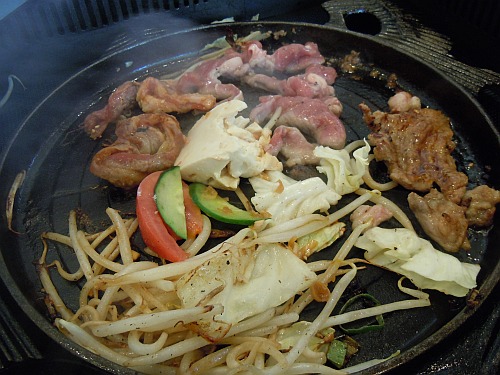 Jingisukan (Genghis Khan)
Jingisukan (Genghis Khan)
I discovered this “Mongolian” grilled grub on a recent trip to Sapporo, the capital of the northern Japanese island of Hokkaido, where it’s considered a local specialty. Jingisukan is a cook-it-yourself-at-the-table dish, eaten both at home and in restaurants.
The main ingredients are slices of soy-sauce marinated mutton or lamb, along with raw vegetables such as cabbage, onions, bean sprouts, mushrooms, and squash. These are all cooked on a round, dome-shaped, table-top griddle molded of heavy iron with ridges on the surface, fired by a strong heat source (usually charcoal) underneath. You grease the hot griddle with a cube of mutton fat, then cook the meat on top. The vegetables are cooked in the juices that run down the ridges and collect in the rim around the edge. Since the cooking and eating of jingisukan can be a messy activity, restaurants often provide diners with a large bib to protect their clothes. But believe me, no Mongol would ever be caught dead (or alive) wearing a bib.
The “Mongolian” moniker comes from the likeness of the griddle to the shape of a Mongolian warrior’s helmet and also the use of mutton in this dish, which the Japanese associate with the Mongolians’ diet. Since sheep have not traditionally been eaten very much by the Japanese, this jingisukan dish is a relative newcomer to Japanese cuisine, dating only from the 1930s.
But old Genghis gets his name attached to everything “Mongolian” these days—beer, vodka, cigars, barbecue. If he were reincarnated in the 21st century, he’d probably come back as a rapacious businessman, bent on global market conquest—the sort of guy who barbecues his competitors but ultimately ends up in the hot pot himself.




